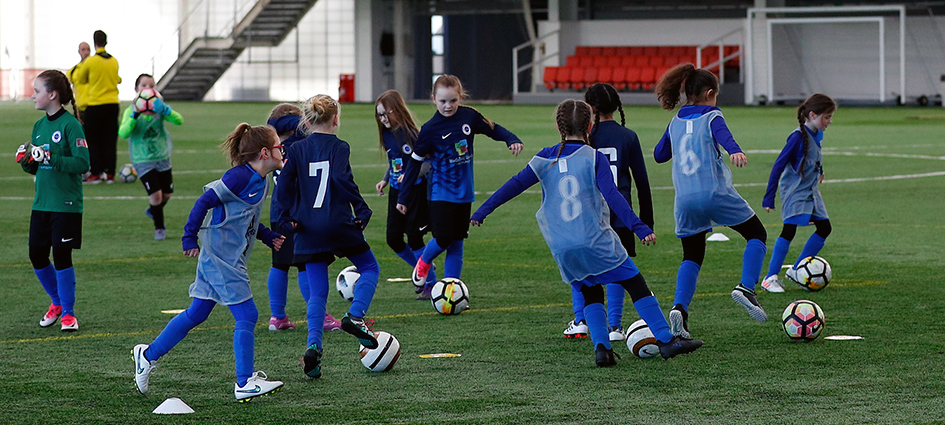
Designing practices that players enjoy
- John Allpress
- 18 July 2019
With many teams returning to summer training, former FA national player development coach, John Allpress, discusses the ingredients of effective practice design for young players.
Over the many years I’ve worked with young players, I’ve seen many start playing the game at eight years old full of energy, enthusiasm, inventiveness, creativity, playfulness and happiness. However, by sixteen this has been replaced by lethargy and a weariness that cannot just be accounted for by teenage angst.
Players have simply been over coached. Our interfering in their learning can create problems which we then try to solve with more interfering. The answer is to stop interfering and understand more about the young players, their needs and how each individual learns best. Here are some things to think about:
Be good for the players
If we look at a vision for football which highlights the aim, ingredients, characteristics and structure of the game it will give us an idea as to how best to set up games and practice for our youngsters. We’ll also be able to work out why they seem to always want to play a game rather than the work their coach has put together for them with the best of intentions.
Aim: to win
Ingredients: two teams, one ball, two goals at either end placed centrally, directional game with offside
Characteristics: decision-making, creativity, unpredictable
Structure: nothing ever happens in exactly the same way more than once, but lots of very similar things happen often. Players are free within the laws of the game, there are lots of transition moments and things often go wrong.
Once the coach can see the vision for football it becomes easier to design practices that are meaningful for the players. If the coach then deviates from the vision they must have a valid reason with a clear outcome in mind.
Part of being good to the players is to design practices and games that helps rather than hinders learning. Back this up with skilful challenges, tasks and questions for individuals, units and teams.
The next part is being an excellent role model by giving the players lots of opportunities to review their performance before, during and after the action.
Both the coach and the players should be curious to learn, to work well together, stay calm and work things out. They must also prepare well, behave well under pressure, react positively when things go wrong, show resilience, try hard to get better, and make good decisions more often.
The coach should model and live these behaviours then the players will learn them. The coach, after all, is the leader. So being a good, caring person who shows an interest in their players is a key ingredient.

Being an excellent role modelBoth the coach and the players should:
- be curious to learn
- want to work well together
- stay calm and work things out
- behave well under pressure
- react positively when things go wrong
- show resilience
- try hard to get better
- prepare well
- make good decisions more often.
Let them playThere has been extensive research into the value of playfulness and the state of mind it encourages, and not just among the young. Think of times when you feel under pressure to perform. If you are an expert there is a tendency to perform better, but novices perform worse under scrutiny and young players are novices or are often introduced to novel situations.
Playfulness encourages creativity, problem solving, imagination, alertness, activity, action and a non-stressed frame of mind – all of which are excellent for learning new, demanding, tricky things. Playfulness is motivated more by the means and the challenge rather than the result. Subsequently, fear-free exploration, experimentation and calibration are to the forefront of the mind, not the blunders or slip ups that may occur.
A concluding thoughtThe important thing in all this is for the coach to chill out and realise that playing games uninhibited and free of the fear of getting stuff wrong, is the most valuable learning tool a young player can have. The learning should be more cherished than the score.
This article was first published in The Boot Room magazine in August 2013.


